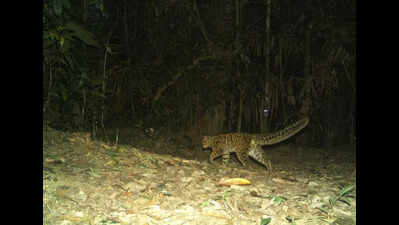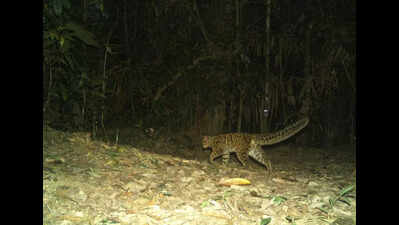- News
- City News
- guwahati News
- Elusive marbled cats spotted at Dehing Patkai Nat’l Park
Trending
Elusive marbled cats spotted at Dehing Patkai Nat’l Park
Dibrugarh: The elusive marbled cats have been spotted through camera traps at Dehing Patkai National Park in Assam's Tinsukia district. The rare sighting, captured during a two-month camera trapping initiative, has sparked excitement among conservationists and wildlife enthusiasts alike.
Assam forest minister Chandra Mohan Patowary expressed his enthusiasm in a Facebook post, stating, "Exciting conservation news!! Our camera trap inside Dehing Patkai National Park just captured a rare sighting of elusive Marbled Cats. This is a testament to the rich biodiversity of Assam and the success of our conservation efforts."
Digboi Divisional Forest Officer (DFO) TC Ranjit Ram announced the discovery on Friday, revealing that 2-3 Marbled Cats were recorded in the park and its surrounding reserve forest. The camera trapping project, launched in November 2024 in collaboration with the Wildlife Institute of India (WII), aimed to study the biodiversity of the region. Over the two-month period, the strategically placed cameras successfully captured images of the elusive feline species.
"We are thrilled to share that our camera traps, set up across various areas of Dehing Patkai National Park and reserve forest, have recorded 2-3 marbled cats. This joint project with WII has yielded significant results, and we are optimistic about further discoveries," said Ram.
"The presence of marbled cats at Dehing Patkai highlights the importance of protecting this unique ecosystem. There is the need for continued research and habitat preservation to ensure the survival of such rare species," wildlife conservationist Joynal Abedin said.
Stay updated with breaking news, weather updates, bank holidays and upcoming public holidays in march.
End of Article
FOLLOW US ON SOCIAL MEDIA







